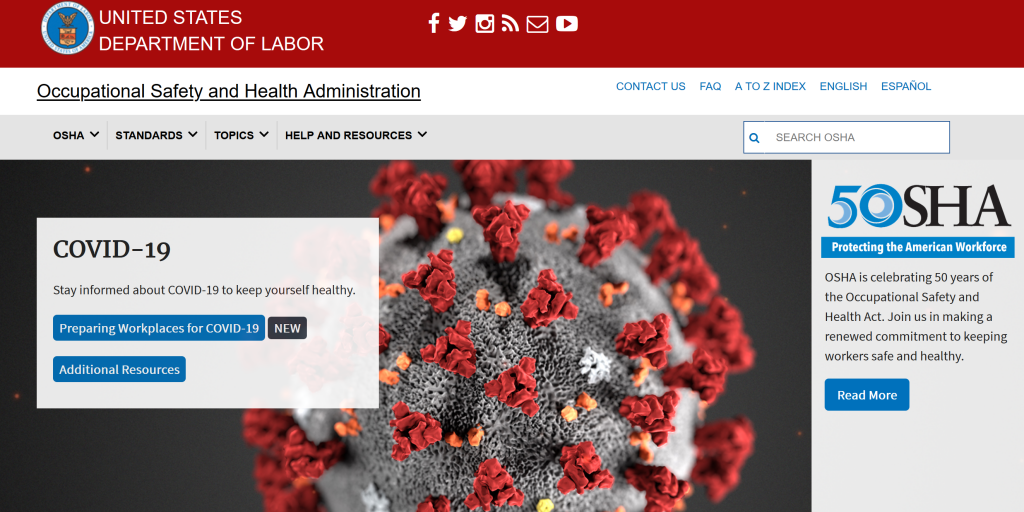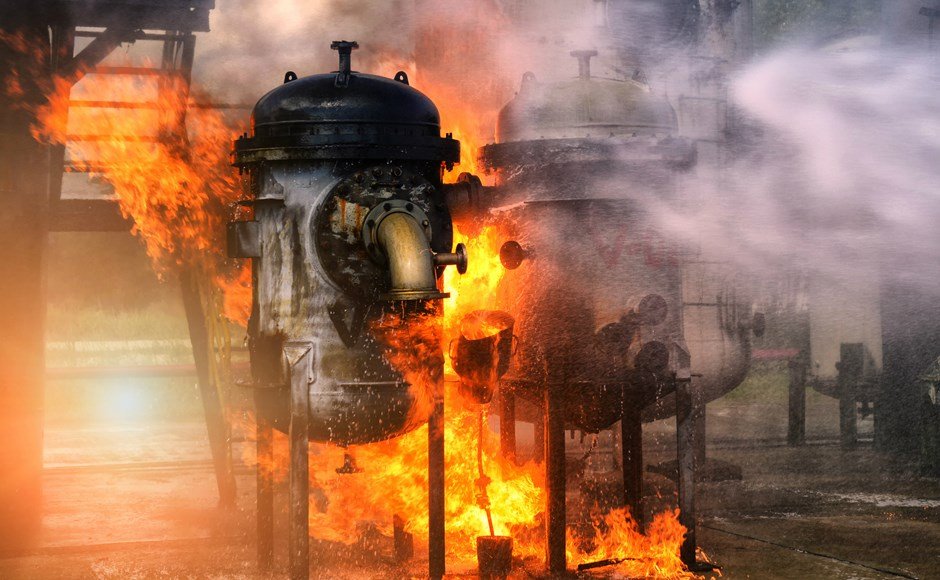The Occupational Safety and Health Administration (OSHA) has issued a new guidance document to instruct agency staff on enforcement priorities when it comes to handling workplace complaints filed by public and private sector employees regarding the Coronavirus.

“Although this enforcement response plan is directed to OSHA personnel, it provides useful additional guidance to employers on OSHA’s enforcement priorities and considerations, building on OSHA’s previously published guidance to employers for responding to and protecting employees from COVID-19 health and safety concerns in the workplace,” say attorneys Daniel Wolff, Monty Cooper and Leland Frost of the Crowell & Moring law firm.
The agency notes that the initial complaints filed by employees with it since the pandemic’s start frequently have focused on an employer’s failure to provide the necessary personal protective equipment (PPE) or insufficiently addressing suspected cases of the Coronavirus illness in the workplace.
OSHA states that, as a general matter, those complaints arising from other than healthcare or emergency response employers should be processed as “non-formal” complaints consistent with the existing practices that are outlined in OSHA’s Field Operations Manual for its compliance officers.
OSHA staff are directed to prioritize COVID-19-related enforcement with a sensitivity toward the risk posed in any given workplace, taking into account the agency’s previously issued employer guidance. OSHA also informs its enforcement personnel that the four categories of occupational risk that they should classify cases under are: very high, high, medium, and low.
The high- and very high-risk categories include jobs pertaining to healthcare personnel and first responders. Jobs with medium risk include those in places where there is frequent and close interaction between people but no known cases of infection, such as high-volume retail establishments. Low-risk jobs are defined as those where there is infrequent contact with both co-workers and the general public.
In addition, the new enforcement response plan modifies the Field Operations Manual to mandate that for all complaints filed by employees with the agency, OSHA staff must make an initial notification to the employer by phone.
In addition, the agency states that it is treating all COVID-19-related inspections as novel cases. For that reason, it has chosen to direct that the Directorate of Enforcement Programs must be notified of all proposed citations and notices related to Coronavirus exposure.
(Read More: COVID-19 information and risk assessment/ .)
Fatalities Are Top Priority
OSHA also directs that fatalities and imminent danger exposures related to COVID-19 are to be prioritized for inspection, “with particular attention given to healthcare organizations and first responders.” Formal complaints (defined as written and signed complaints) alleging unprotected exposures to COVID-19 by employees in high or very high-risk jobs may warrant an on-site inspection.
However, for most other workplaces, even formal complaints “will not normally result in an on-site inspection.” For those cases, the “non-formal” procedures set out in the Field Operations Manual will be followed, but if the employer’s response is not adequate, an on-site inspection may follow, the Crowell & Moring attorneys warn.
The guidance takes care to stress that OSHA compliance officers need to be appropriately trained for inspecting workplaces where COVID-19 exposure may have occurred, and take appropriate precautions, including wearing the necessary PPE. They also are directed to practice the social distancing, frequent hand-washing, and other contamination-reduction techniques we all have become familiar with.
OSHA says that compliance officers should take all possible steps to make sure that the opening conference is held away from any area of suspected or known Coronavirus exposure, including conducting it by phone if feasible. The opening conference should include the professionals in the employer’s operation who are responsible for occupational health hazard control.
Compliance officers are directed to determine whether the employer has in place a written pandemic plan, as recommended by the Centers for Disease Control and Prevention (CDC) and make sure to review other applicable procedures that should be in place. These procedures should include job hazard assessments, PPE protocols, and any respiratory protection program or policies that should be in place.
OSHA also directs compliance officers to review pertinent medical records related to COVID-19 exposures and records of employee training on the employer’s relevant pandemic procedures. They also are to assess whether the employer has implemented a hierarchy of controls as part of its protective measures (such as engineering controls, administrative controls, work practices, and PPE).
Attorney Cressinda D. Schlag of the Jackson Lewis law firm advises employers to keep in mind that OSHA’s enforcement plan makes clear that most work environments have a low risk of exposure to COVID-19. However, she notes that the agency views infection control practices and social distancing measures as a type of general duty obligation most employers are expected to have in place to protect employees from potential exposure.
“OSHA may, therefore, pursue enforcement against employers who it believes have inadequate infection control procedures or social distancing measures under the Occupational Safety and Health Act’s General Duty Clause,” she says.
OSHA’s enforcement guidance also provides for OSHA inspectors to pay close attention to employer compliance with OSHA standards on injury and illness recordkeeping, bloodborne pathogens, sanitation, PPE, and respiratory protection when conducting COVID-19 related investigations or inspections, Schlag warns.
(Read More. e-books-guidance on preparing workplaces for covid-19/.)




